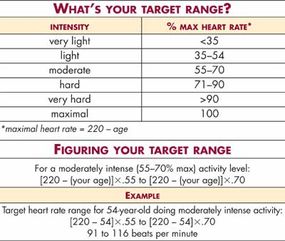Becoming more physically active is not completely without risks for people with diabetes. On the other hand, remaining sedentary is no bargain, either; it does nothing to help your glucose control, your weight management, or your overall well-being. To gain the benefits of increased physical activity and minimize potential risks, you need to understand and evaluate those risks up front and take steps to prevent problems before they occur.
Hypoglycemia
For people with diabetes who take medication or insulin, hypoglycemia is a concern. Whenever you are physically active, your muscles burn glucose. First, they gobble up the glucose they have stored as glycogen. As the activity continues, glucose from the blood pours into the muscles to supply their energy needs, lowering blood glucose levels. However, this march of glucose from the blood into the muscles doesn't end when the activity stops.
The body needs to refill the muscles' glucose storage tanks in preparation for future movement. As a result, a hypoglycemic reaction can occur not only during periods of activity but up to 24 hours later. Some people with diabetes who have frequently experienced hypoglycemia begin to associate any form of activity with a loss of glucose control.
For such individuals, a lack of glucose testing may keep them in the dark about how their body reacts to activity. As a result, they are unprepared for the low blood glucose level that can occur when they mow the lawn or when they take a brisk walk through the park. When such a low occurs, they may grab a handful of jelly beans to treat the low, only to find their glucose level skyrocketing as a result. So they take extra insulin or medication at dinner to treat the high, but the blood-glucose roller-coaster ride continues with another low before they go to bed.
These fluctuations create great confusion and frustration, leaving these individuals upset and scared. Activity, they may decide, is not worth the seemingly unpredictable swings in glucose. For such individuals, more frequent blood glucose testing can help them better understand their body's response to exercise and prepare for it by adjusting medication or food intake.
Heart Disease
Before you increase your activity level, you need to consider the possible presence of heart disease. As you've already learned, coronary heart disease is very common in people with diabetes, affecting perhaps as many as 50 percent of them. To assess your risk, you and your doctor need to take into account your age, your blood pressure, your blood fats, whether you have protein in your urine, the length of time you have had diabetes, and your family history.
So before you begin increasing your level of activity, consult your doctor and, if appropriate, have an exercise tolerance test. This test is done on a treadmill and reflects your heart's ability to work under stress. Your chances of having a positive result, indicating heart disease, increase with each risk factor you have. Even if you are at increased risk or have a positive test, you will likely still be able to increase your physical activity; you will just need to work more closely with your diabetes care team to set safe guidelines for activity and, perhaps, to determine if medications to lower your risk of heart trouble are in order.
Diabetes Complications
Before you increase your activity level, you need to account for any diabetic complications or related conditions that may be present. Some types of activity may not be wise for people with certain medical conditions. Any activity that includes straining, such as weight lifting, can dramatically increase blood pressure during the actual activity, further aggravating any hypertension that is present.
To lessen any potential problems, you need to have your blood pressure well controlled before you start increasing your activity level and especially before beginning an activity that involves straining. Proliferative retinopathy is also aggravated by straining, which increases the pressure within some of the weakened blood vessels of the eyes. Activities that require straining or that involve jarring or rapid head motions may also cause an acute hemorrhage in already weakened eye vessels.
For this reason, it is important to have your eyes examined for signs of retinopathy before starting an exercise program and have them rechecked annually. If you have significant nerve disease in your feet, you may not be able to feel injuries to your feet, the most common of which are blisters. This does not mean you cannot exercise, but it means that you need to have your feet checked by your doctor first and you must observe good foot care at home, including inspecting your feet for sore spots and minor injuries daily.
You'll also want to get expert advice on proper footwear for the activity and be sure that the footwear you choose is fitted properly to your feet.
Once you've factored in the risks, you can actually build your exercise program. That is the focus of our next section.



